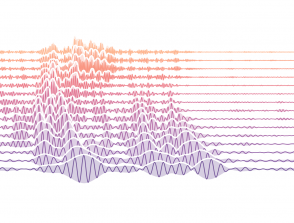HDR : La source sismique à travers les échelles : des nano-séismes aux méga-séismes, en passant par les volcans
18/06/2025
IPGP - Îlot Cuvier
14:00
Soutenance d'Habilitation à Diriger des Recherches
Amphithéâtre
Claudio Satriano
Sismologie (SIS)
https://u-paris.zoom.us/j/86323898765?pwd=a5mcArmqmCiPibjsvhZGWH8HLfdbrL.1
ABSTRACT:
As an observational seismologist, I keep coming back to the same
question: what is an earthquake, and how can we truly describe it?
My research aims to better understand the structure and mechanical
properties of fault zones through the analysis of seismicity. This also
includes exotic phenomena, such as tectonic tremor or low-frequency
earthquakes, which help complete the puzzle of seismic and aseismic
interactions.
The goal is to decipher how deformation is organized along faults
throughout the seismic cycle, and what controls the – often very
complex – rupture process of earthquakes, both small and large.
And yes, I’ve also taken a detour into volcanology, particularly to
study the remarkable signals generated by the 2018 Mayotte eruption.
Along the way, I’ve had the pleasure of supervising several
Master’s students, PhD candidates, and postdoctoral researchers, whose
ideas and energy have greatly enriched my work. These human
collaborations are, to me, one of the most rewarding aspects of the
profession.
Looking ahead, many perspectives are opening up: making full use of
increasingly dense observation networks, reanalyzing past seismic
records with today’s tools, and incorporating new analysis methods –
including machine learning – to better decode the richness of seismic
signals.





